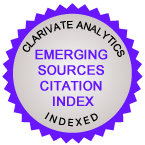Abandoned land: Legal aspects and utilization in Indonesia
DOI:
https://doi.org/10.21638/spbu14.2025.116Abstract
One of the fundamental problems in the land sector in Indonesia is inequality in the distribution pattern of land ownership, control, use, and utilization. This situation is further exacerbated by the large amount of land abandoned by land rights owners, which covers millions of hectares. This article digs deeper into the significance of controlling abandoned land in efforts to realize agrarian reform that prioritizes a more equitable distribution of land ownership and use. The Indonesian Constitution (Undang-Undang Dasar 1945) and the Basic Agrarian Law (Undang-Undang Pokok Agraria, UUPA) establish a relationship between the state and citizens regarding land and natural resources. Abandoned land refers to land that is not utilized and does not provide benefits to the community, which, as a result, becomes land that is directly controlled by the state. Control of abandoned land is key to addressing the unequal concentration of land ownership, encouraging social and economic balance, and increasing food and energy security. Nevertheless, the process of controlling abandoned land addresses a number of challenges, including enforcing complex laws, resistance from rights holders, and errors in implementation procedures. The success of agrarian reform depends on factors such as strong government support, the presence of empowered farmer and community organizations, the availability of accurate data, and adequate budget allocation.
Keywords:
abandoned land, access reform, agrarian reform, customary law, land rights, land redistribution, state control, state land
Downloads
References
Downloads
Published
How to Cite
Issue
Section
License
Articles of "Vestnik of Saint Petersburg University. Law" are open access distributed under the terms of the License Agreement with Saint Petersburg State University, which permits to the authors unrestricted distribution and self-archiving free of charge.






